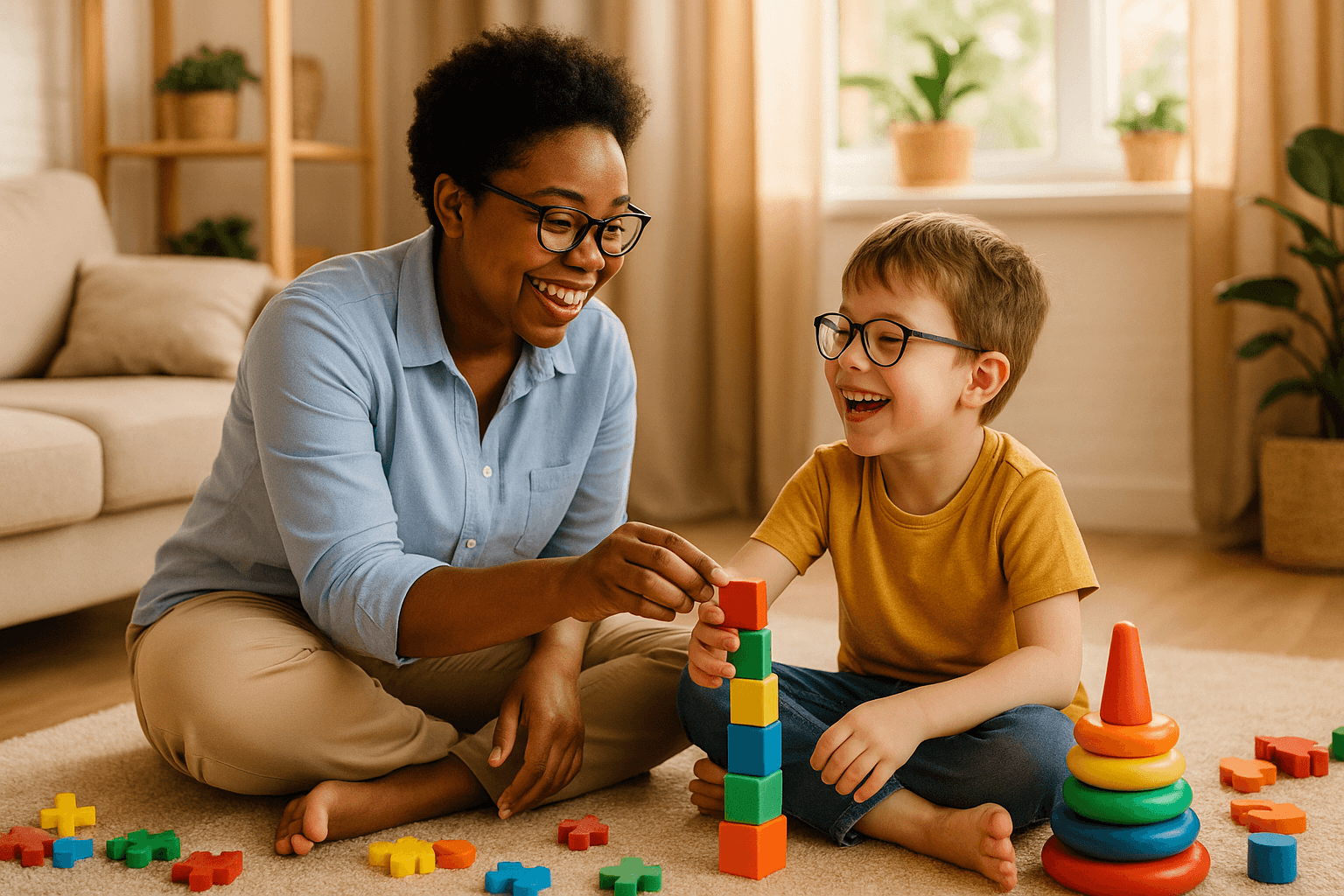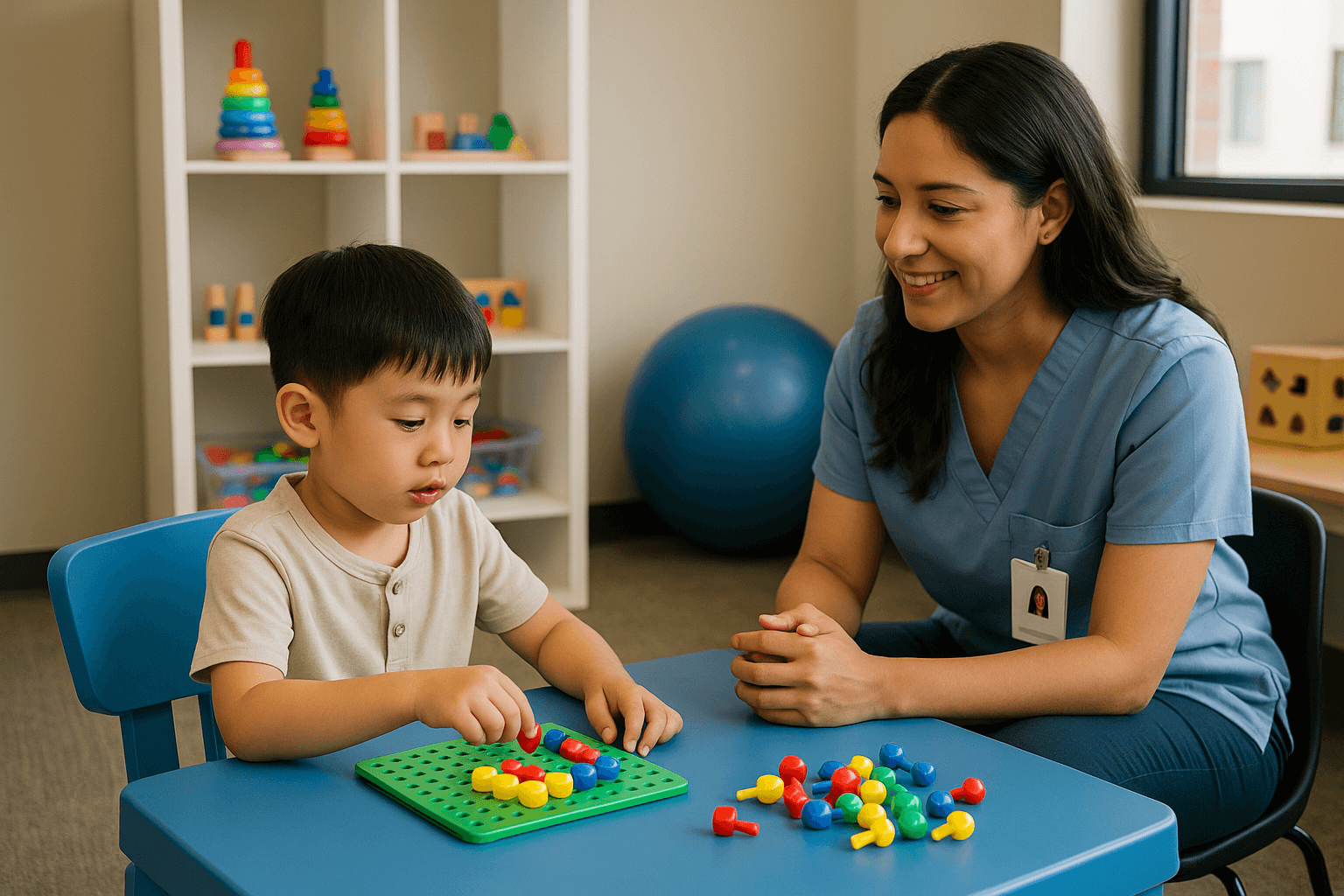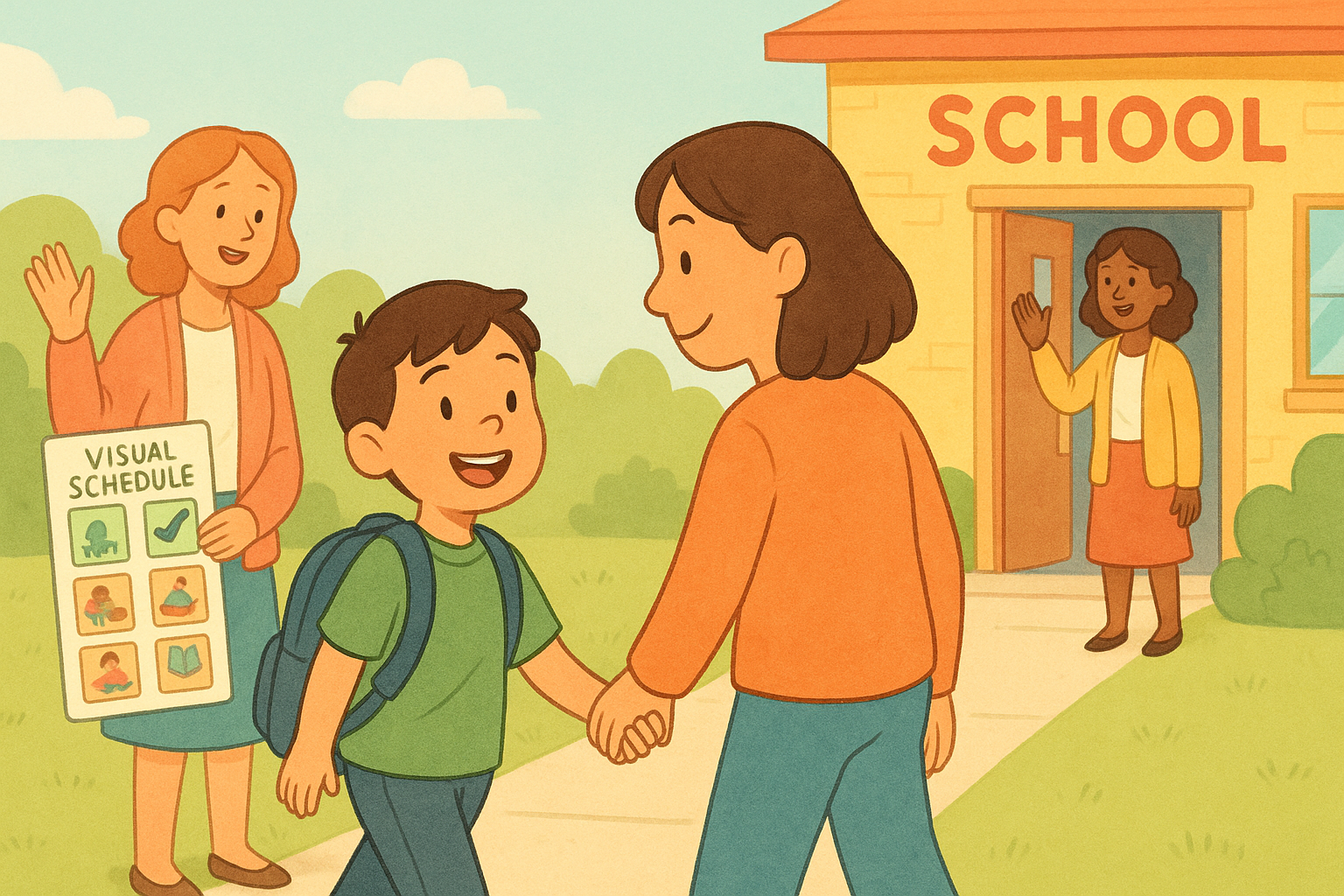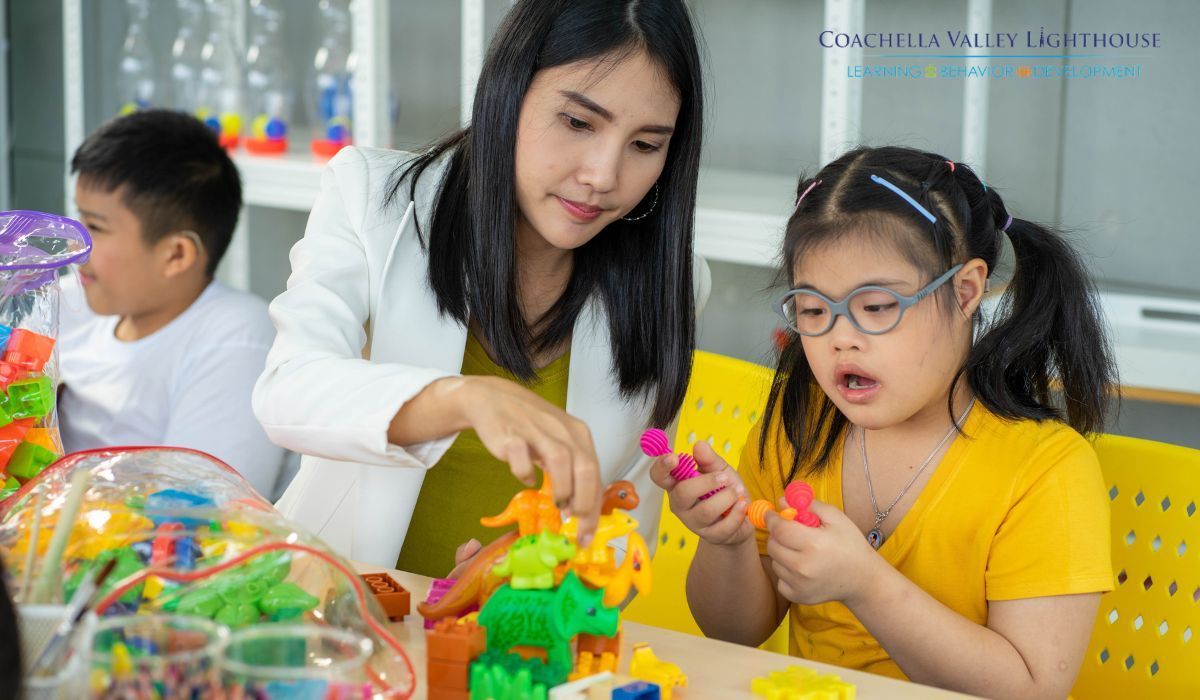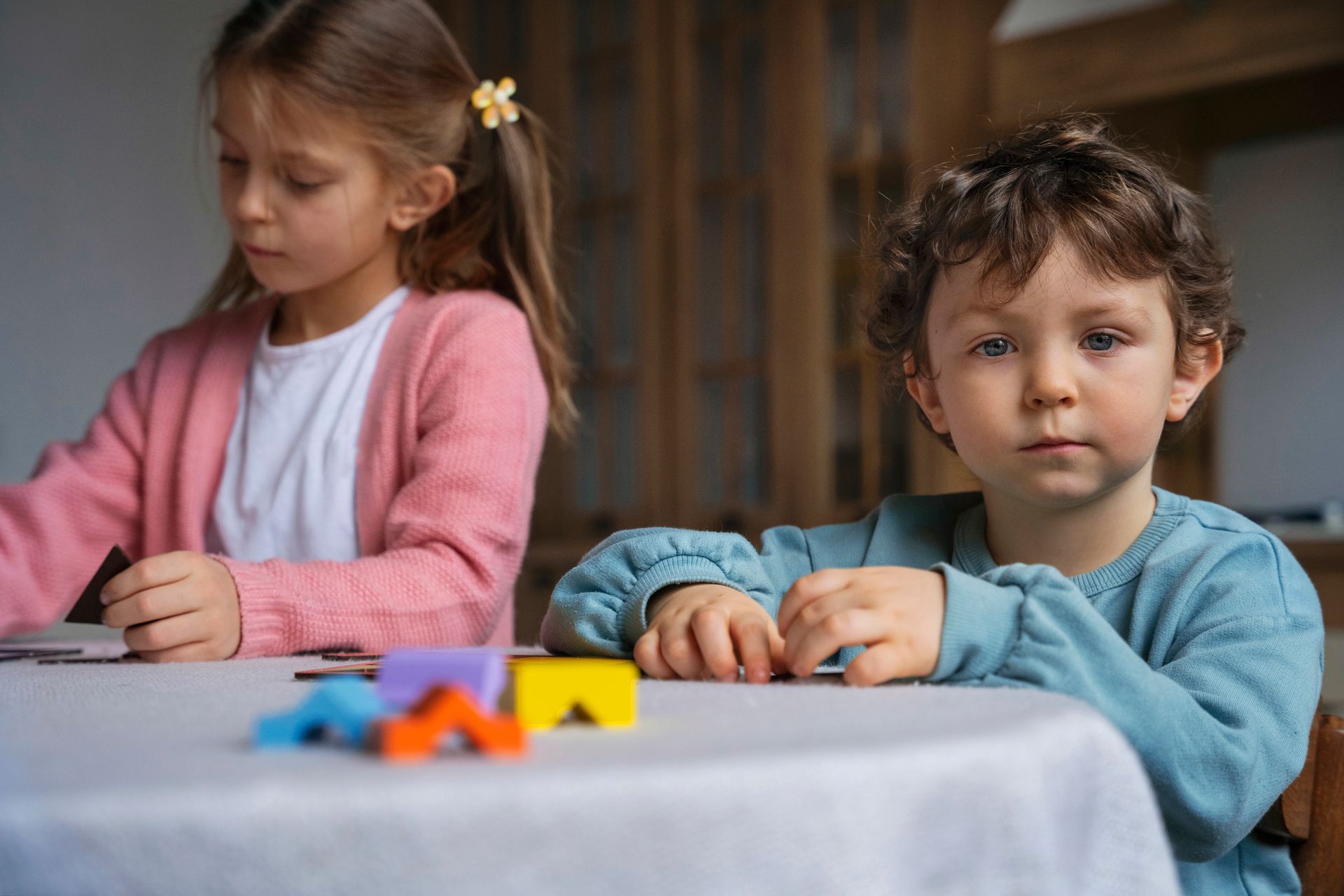Key ABA Therapy Milestones: What Progress Looks Like
As a parent of a child on the autism spectrum, it’s natural to feel both hopeful and anxious when starting ABA (Applied Behavior Analysis) therapy. With the goal of enhancing various skills, from communication to social interactions, ABA therapy provides individualized strategies to help children make meaningful progress. But what does progress look like? And how can you, as a parent, understand and celebrate the milestones along the way?
This guide will walk you through the key milestones that are often observed during ABA therapy. Keep in mind that every child is unique, and the pace at which they achieve these milestones can vary. However, understanding these key markers can help you feel more confident about the process and better equipped to support your child on this journey.
Initial Assessment and Baseline Data
Before starting ABA therapy, a thorough assessment is conducted to understand your child’s current skills and areas of need. This initial assessment provides the foundation for individualized therapy, ensuring that the approach is tailored to your child’s unique strengths and challenges.
Key components of the initial assessment include:
- Functional Behavior Assessment (FBA): Identifying problematic behaviors and the potential causes behind them. This helps the therapist to develop strategies to reduce these behaviors and replace them with more functional alternatives.
- Skill Assessments: Evaluating your child’s current communication, social, motor, and self-care skills to determine their starting point.
- Parent and Caregiver Interviews: Gaining valuable insights into your child’s everyday environment and challenges, which helps in designing a comprehensive therapy plan.
Once baseline data is collected, measurable goals are set, and therapy begins. The initial milestone is simply getting started, and this stage helps create a roadmap for future progress.
Early Communication Milestones
One of the primary focuses of ABA therapy, particularly for children with autism, is enhancing communication skills. For nonverbal or minimally verbal children, early progress often involves understanding how to communicate needs and wants in ways that reduce frustration.
Milestones in early communication may include:
- Requesting (Mand Training): Learning to request items or activities, whether through words, gestures, or picture exchange systems. A major early victory is when a child understands that they can get their needs met through communication rather than maladaptive behaviors.
- Labeling (Tact Training): Children begin to label objects, people, or actions in their environment, which expands their ability to express themselves. For instance, labeling “dog” when they see one in the park is a significant step forward in communication.
- Responding to Questions: A key milestone is responding to simple “yes” or “no” questions or recognizing when they’re being asked a question. This lays the foundation for more complex conversational skills in the future.
The journey through early communication milestones is incredibly individualized. Some children may progress faster with verbal skills, while others might excel with non-verbal communication tools.
Behavioral Milestones: Reduction of Challenging Behaviors
ABA therapy places a strong emphasis on decreasing maladaptive behaviors such as aggression, self-injury, or tantrums. Reaching behavioral milestones is essential for your child’s well-being and overall development.
Some key behavioral milestones include:
- Decreasing Tantrums or Aggression: ABA therapy is effective in identifying the triggers behind these behaviors and teaching children alternative ways to communicate their needs or frustrations. Over time, you may notice fewer instances of these behaviors as your child learns to cope and communicate more effectively.
- Improved Attention Span: Many children with autism struggle with attention and focus. A critical milestone is when your child can engage with tasks for longer periods without becoming distracted or frustrated. This improved attention benefits not only their academic progress but also their ability to engage in social situations.
- Self-Regulation and Coping Strategies: As therapy progresses, your child will likely develop better self-regulation skills. This means they are better able to manage their emotions in stressful or overstimulating environments. For instance, instead of having a meltdown in response to a loud noise, they may learn to use coping strategies, like covering their ears or seeking a quiet space.
Progress in reducing challenging behaviors can be one of the most rewarding milestones for both the child and the family. It often leads to a more peaceful home environment and greater opportunities for the child to engage with peers and participate in community activities.
Social Skill Milestones: Building Relationships
Social skills are an area where many children with autism face significant challenges. ABA therapy uses a structured approach to teach these skills, helping children interact more effectively with others. Social skill development is a critical milestone for creating friendships, succeeding in school, and participating in community activities.
Milestones in social skills may include:
- Eye Contact and Joint Attention: One of the early social milestones is making and maintaining eye contact. Joint attention, which involves sharing focus on an object or activity with another person, is also an essential social skill developed during ABA therapy.
- Turn-Taking and Sharing: ABA therapy helps children learn to share toys, take turns during play, and participate in group activities. Mastering these skills is a significant milestone because it facilitates social play and interaction with peers.
- Initiating Social Interaction: For some children, initiating conversation or play with others can be challenging. A key milestone is when your child begins to approach others to start a conversation, ask questions, or join in play activities. These skills are critical for building friendships and social confidence.
- Understanding Social Cues: Many children with autism struggle to understand nonverbal communication, such as facial expressions or tone of voice. ABA therapy often focuses on teaching children to recognize and respond to these social cues, leading to more successful interactions with peers and adults.
The development of social skills is a gradual process, but every small step opens up new possibilities for meaningful connections with others.
Cognitive and Academic Milestones
As children progress in ABA therapy, you’ll likely see improvements in cognitive and academic skills. While the focus of ABA therapy is often on communication and behavior, it also lays the groundwork for learning and problem-solving.
Key cognitive and academic milestones may include:
- Following Instructions: One of the foundational milestones is learning to follow simple instructions, such as “sit down” or “pick up the toy.” As your child progresses, they will begin to follow more complex directions and multi-step instructions.
- Matching and Sorting: ABA therapy often includes activities that build cognitive skills, such as matching objects by color or shape and sorting items into categories. These early problem-solving skills are the building blocks for more advanced academic learning.
- Counting and Recognizing Numbers or Letters: For children who are ready, ABA therapy can also target academic skills like counting, recognizing letters and numbers, and even beginning to read. While these milestones may seem small, they represent significant progress in your child’s ability to learn and process information.
The development of cognitive and academic skills varies from child to child, but ABA therapy provides the structured environment necessary for fostering these critical abilities.
Self-Care and Daily Living Skills Milestones
Teaching children independence is a crucial goal of ABA therapy, and self-care skills are an essential part of this process. Progress in this area enhances your child’s ability to function independently at home, school, and in the community.
Milestones in self-care and daily living skills include:
- Toileting: Many children with autism experience delays in toilet training. ABA therapy uses step-by-step procedures and positive reinforcement to help children achieve independence in toileting. This is often a major milestone for both the child and their family.
- Dressing and Grooming: ABA therapy can help children learn to dress themselves, brush their teeth, comb their hair, and perform other grooming tasks. Achieving these milestones increases their independence and confidence in daily routines.
- Eating Skills: ABA therapy can also address challenges related to eating, such as using utensils, chewing properly, and trying new foods. These milestones are particularly important for children with feeding difficulties or sensory sensitivities around food.
Every milestone in self-care represents a step toward greater independence, which is a significant achievement for both the child and their family.
Generalization of Skills: Applying What They’ve Learned in Real-Life Situations
One of the ultimate goals of ABA therapy is for children to generalize the skills they learn in therapy to real-life situations. This means that the progress your child makes in the controlled environment of therapy can be applied to various settings, such as home, school, and social interactions.
Generalization milestones include:
- Using Communication Skills Across Different Settings: One of the most rewarding milestones is when a child begins to use their communication skills in different environments. For example, they might use words or gestures to request something at home, in school, or at a friend’s house.
- Transferring Social Skills to New Situations: Another key milestone is when your child starts using their social skills with peers outside of the therapy setting. This could include joining in a game at the park or making a friend at school.
- Adapting to New Routines or Changes: Many children with autism struggle with changes in routine. A significant milestone is when your child can adapt to new routines or handle unexpected changes without becoming overwhelmed.
Generalization is often considered one of the final stages of progress in ABA therapy, as it indicates that the skills your child has learned are becoming a natural part of their everyday life.
Ongoing Progress Monitoring and Reevaluation
ABA therapy is a dynamic process, and one of the most important aspects is continuous progress monitoring. Your child’s therapy program will be regularly reviewed and adjusted based on their ongoing progress and any new challenges that arise.
Key milestones in progress monitoring include:
- Data Collection: Throughout therapy, data is collected on your child’s behavior, communication, and skill development. This data helps track progress and identify areas where additional support may be needed.
- Program Adjustments: As your child meets their goals and achieves key milestones, the therapy program will be adjusted to reflect their new skills and challenges. This ensures that therapy remains relevant and effective.
- Parent and Caregiver Involvement: A critical part of ABA therapy is involving parents and caregivers in the process. Milestones in this area may include learning to implement strategies at home or participating in parent training sessions to support your child’s progress.
Ongoing progress monitoring ensures that your child’s therapy is always aligned with their current needs and goals, allowing for continued growth and development.
Celebrating Success: Recognizing the Importance of Every Milestone
As a parent, it’s essential to recognize and celebrate each milestone your child achieves, no matter how big or small. Progress in ABA therapy can sometimes feel slow, and it’s easy to focus on what’s still ahead. However, every new skill, every decrease in challenging behavior, and every step toward independence is a victory worth celebrating.
Success in ABA therapy looks different for every child, and there’s no one-size-fits-all timeline. What’s most important is that your child is making progress toward their goals and improving their quality of life.
As you continue this journey with your child, remember to take pride in their achievements and your role in supporting their growth. Each milestone, whether it’s communicating a need for the first time or mastering a new self-care skill, represents a step toward a brighter, more independent future.
Achieve ABA Therapy Success with Coachella Valley Lighthouse
At Coachella Valley Lighthouse, we are committed to guiding parents and children through the ABA therapy process, helping to achieve these key milestones and more. Our experienced team of therapists is dedicated to providing individualized care that fosters meaningful progress for every child.
Call Coachella Valley Lighthouse at 760-625-0951 to learn more about how ABA therapy can support your child’s growth and development.
FAQs
What communication challenges do children with autism often face?
Children with autism may experience a variety of communication challenges, including delayed speech or language development, difficulty with social communication (like starting conversations or understanding social cues), echolalia (repeating words without understanding), and issues with non-verbal communication such as gestures or body language. Some children may also struggle with joint attention, which involves sharing focus on something with another person.
How does ABA therapy help children with autism improve their communication skills?
ABA therapy helps children with autism by using individualized therapy plans tailored to their specific communication challenges. Techniques like positive reinforcement, Verbal Behavior Therapy, and Natural Environment Teaching (NET) help teach children to use language functionally, make requests, and engage in social communication. ABA therapy also uses tools like Augmentative and Alternative Communication (AAC) devices for non-verbal children, providing a structured path for improving their communication skills.
What is Verbal Behavior Therapy and how does it work?
Verbal Behavior Therapy (VBT) is a specialized ABA therapy approach that breaks down language into different categories called operants, including mands (requests), tacts (labels or descriptions), echoics (repeating words), intraverbals (conversational responses), and autoclitics (modifiers). This approach helps children learn to use language functionally, building their ability to communicate needs and engage in conversation.
Can ABA therapy help non-verbal children improve communication?
Yes, ABA therapy can be highly effective for non-verbal children. Therapists may introduce Augmentative and Alternative Communication (AAC) methods like the Picture Exchange Communication System (PECS) or speech-generating devices (SGDs). These tools allow non-verbal children to communicate their needs and engage with others, giving them the opportunity to express themselves even without verbal speech.
How can parents support their child’s communication progress at home?
Parents can support their child’s communication progress by creating communication opportunities throughout the day, using visual supports like picture charts, practicing joint attention activities, modeling appropriate communication behaviors, and providing positive reinforcement when the child successfully communicates. These strategies help reinforce the skills learned in ABA therapy and encourage ongoing progress.



